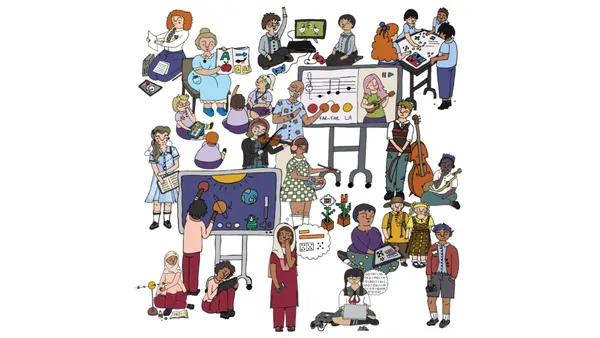Dive Brief:
- A new report from the National Governors Association Center for Best Practices (NGA Center) aims to narrow the gap between what employers need and the type of skills employees entering the workforce possess, identifying core elements of system changes governors can use to embed work-based learning in K-12.
- The lessons were collected as NGA worked with 19 states and territories for four years to build opportunities for youth to access work-based learning experiences. The report recommends specific action items such as aligning work-based learning goals with governors’ education and workforce priorities.
- The elements include how to create and communicate a vision, methods to measure the data, and ways to cultivate resources and policy changes. Despite a low unemployment rate, many new workers are unable to secure stable employment due to lack of skills.
Dive Insight:
Funding is a major hurdle for districts looking to connect students to relevant workforce training. Often, funds are allocated through legislation. For example, 41 states took action to spend more on work-based learning, dual enrollment and early college programs. Vermont, Virginia and Illinois were among the 35 states that passed legislation to connect students and businesses through programs like apprenticeships.
Some districts are adding high-tech training in vocational classes to teach auto shop students about electric and self-driving cars. Funding for these tools can be secured through grants or fund-raising. In Texas, Mesquite Independent School District builds and auctions cars and performs maintenance on teacher-owned cars. Money earned goes back into the program.
Though more high-achieving students are seeking CTE courses in computer programming and coding, experts urge districts to continue offering traditional vocational classes like construction, as the need for skilled employees in these fields continue to grow. Wood shop, cosmetology and video production are other CTE options that can help students develop critical-thinking skills useful in a variety of professions.
The U.S. Department of Education provides about $1.3 billion per year for CTE courses for elementary, secondary and adult education. Pathways to STEM Apprenticeship program gave $3 million to six states to help CTE students develop post-secondary education and connect them to STEM careers.







 Dive Awards
Dive Awards






